The historic capital of Anjou, Angers is now home to a large number of academics and researchers, particularly scientists, but also offers a wide range of cultural attractions and activities. Not least in the La Doutre district, with its beautiful medieval houses.
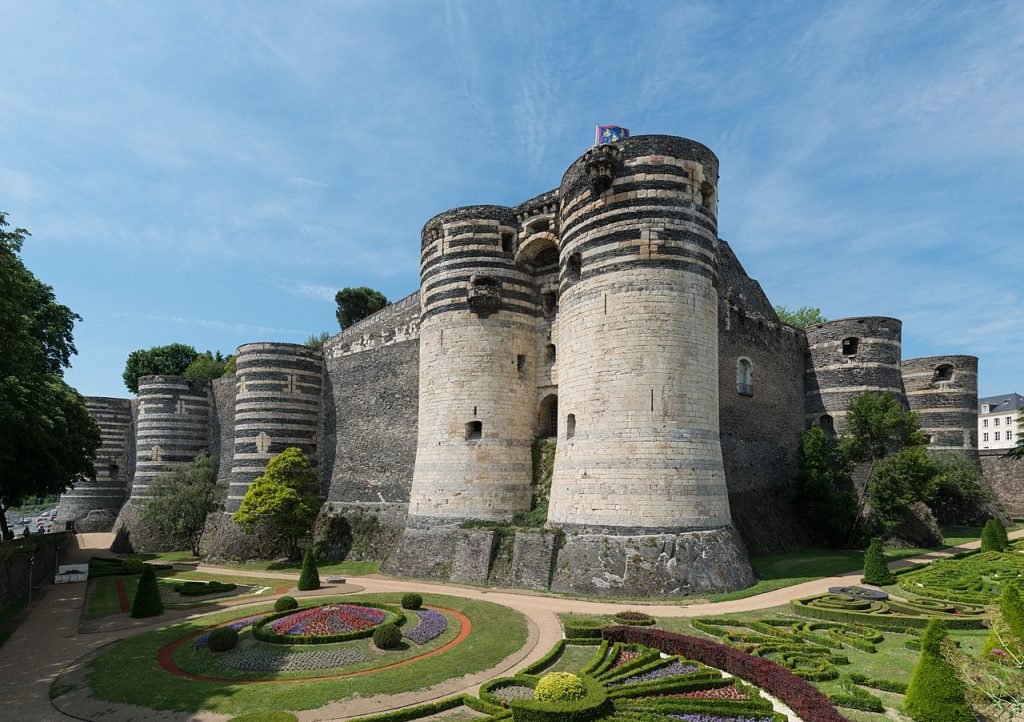
In this district you will find the synagogue , housed in a former Romanesque church dating back to the 11th century. At the time of the French Revolution, this small church was abandoned, as the Christian faithful preferred to pray in the larger churches in the heart of Angers. The Church therefore sold the property to the city of Angers in 1870. The site was then used for a variety of purposes. At the turn of the 21st century, Angers’ small synagogue on Valdemaine street was in an advanced state of deterioration and needed to be replaced. The Town Hall offered to purchase the property from the Jewish community, which had not been used for some twenty years. The town council played a major role in the restoration, notably with the help of the architects from the Bâtiments de France. As a result, this small chapel became a synagogue in 2013.
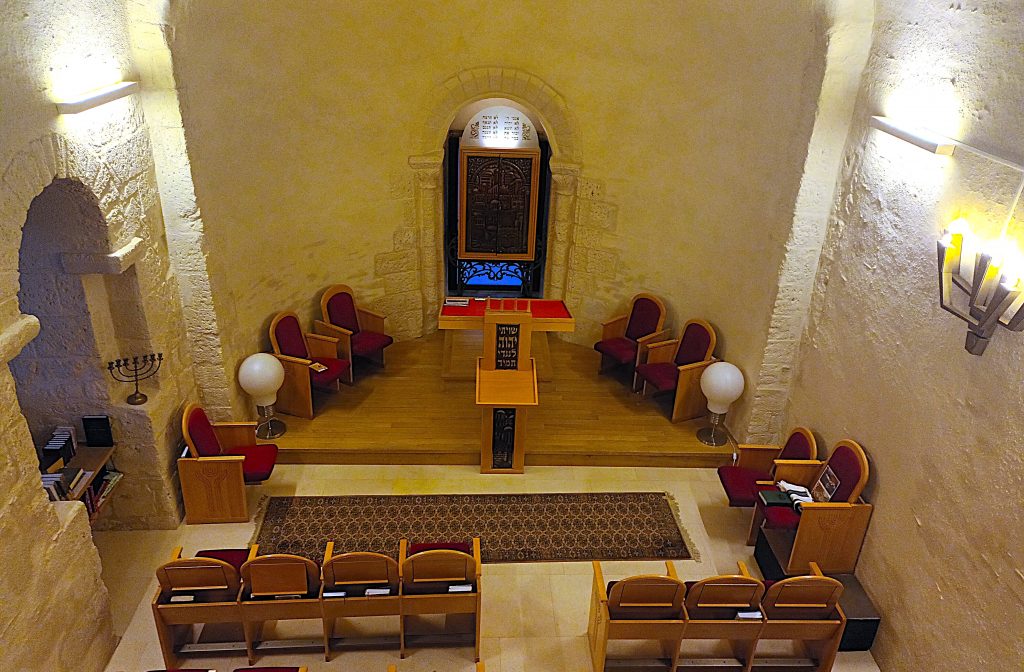
All the furniture and armchairs come from Kibbutz Lavi, just outside Tiberias. The synagogue has an aron, a teva, a mezzanine on the first floor for women, a menorah on the wall and commemorative plaques for the deceased. The walls are made of slate, because Angers has been known as “slate country” since the 12th century, when these mines contributed to the prosperity of the region.
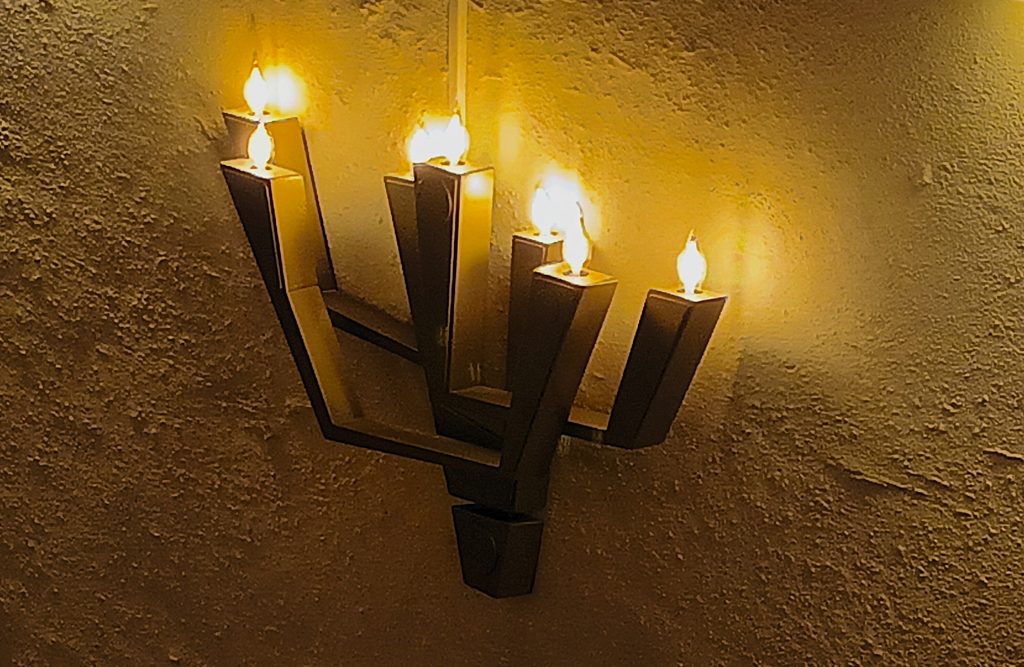
In a small room nearby, a painting depicts the first rabbi of Angers, dating from the 11th century. Originally from Narbonne, then rabbi of Limoges, he moved to Angers to help restructure the community, which was in great difficulty at the time. It was a highly successful collective effort, as evidenced by the fact that a synod of rabbis was held in Angers in 1154. Among them was Rabbonu Tam, Rashi’s grandson. All the Oïl-speaking rabbis were invited, from Brest to Nancy and from Boulogne-sur-Mer to Bourges. Proof, then, that the Jewish presence in Anjou was significant in the 12th century. However, we are still unable to identify the exact location of the synagogue. Unfortunately, in 1236, the Jewish community of Anjou was the victim of a terrible pogrom, resulting in the deaths of 3,000 people.
These massacres did not completely wipe out the Jewish presence in Anjou. Documents from the end of the 13th century attest to complaints from Jews who were discriminated against and thus to their presence. They enjoyed protection under Charles I, Duke of Anjou, but in 1288 they were officially expelled from Anjou by Charles II. A few Jews returned to Angers in the 14th century, and then again in the following centuries, but it was not until the emancipation of the French Revolution that the community slowly began to re-establish itself.
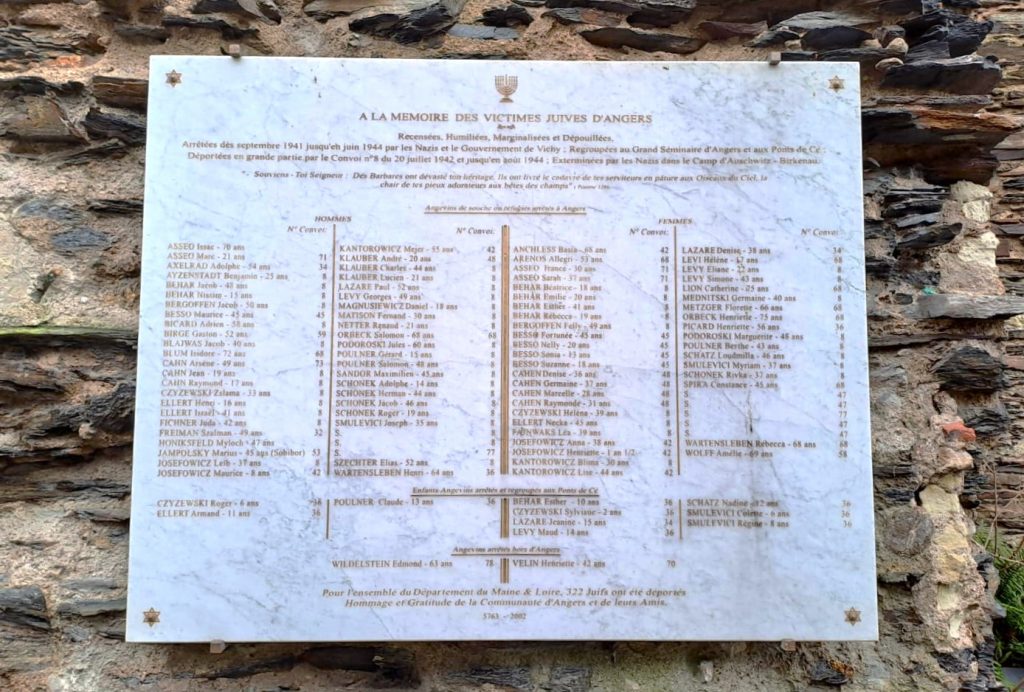
On 21 July 2024, the Voie blanche (“White way”) was inaugurated. This memorial work is located in Place Giffard-Langevin, near the station. Created by artist Emmanuel Saulnier and architect Nicolas Michelin, the work pays tribute to the Jews deported in convoy 8. It consists of a 64-metre long mineral ribbon running alongside the railway line, on which are engraved the surnames, first names and ages of each of the deportees. The ceremony was attended by Angers mayor Jean-Marc Verchère, first deputy Christophe Béchu, deputy for Citizenship and Veterans Karine Engel, deputy François Gernigon, senator Stéphane Piednoir and prefect Philippe Chopin.
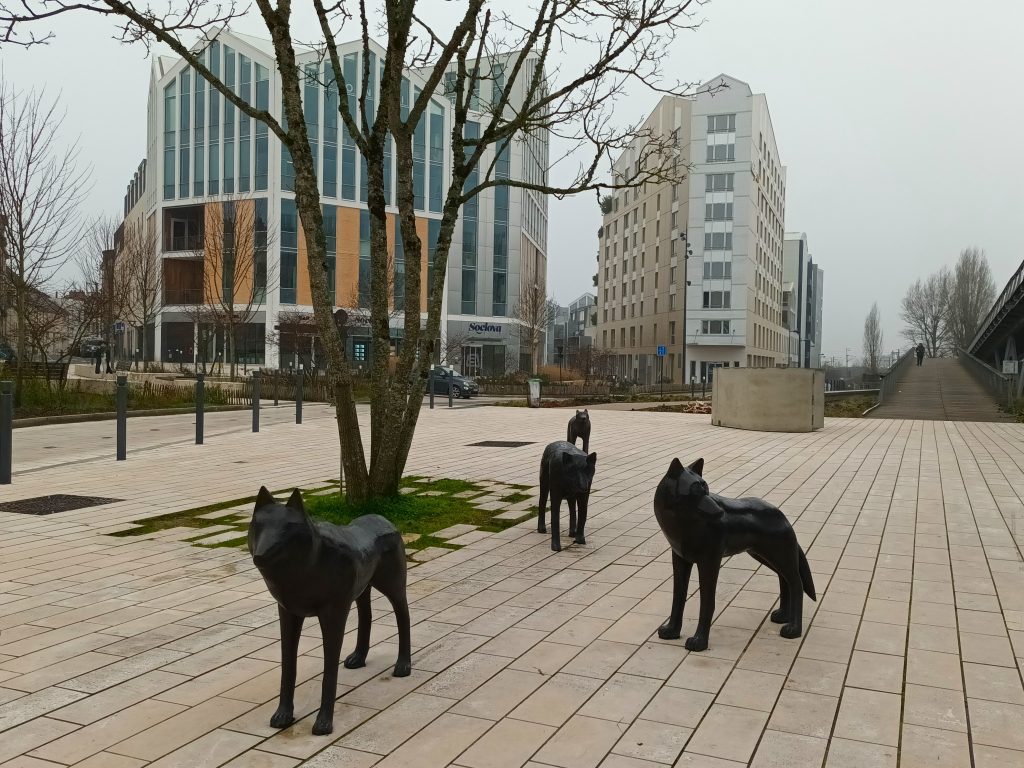
The 8th convoy of deportees left the military embarkation quay on 20 July 1942. When the roundup took place in Paris on 16 July 1942, a roundup was simultaneously organised in the Loire region. Official documents from the occupying forces predicted that 1,000 people would be arrested. The Germans were unaware that, at the time, the Grand Ouest region was known as the ‘Jewish desert’. Of the 330,000 Jews living in mainland France at the time, only 5,000 lived in the region. Having found only 400, they went looking for Jews as far as Cherbourg and Biarritz to obey the orders of their superiors, demanding the arrest of 1,000 Jews.
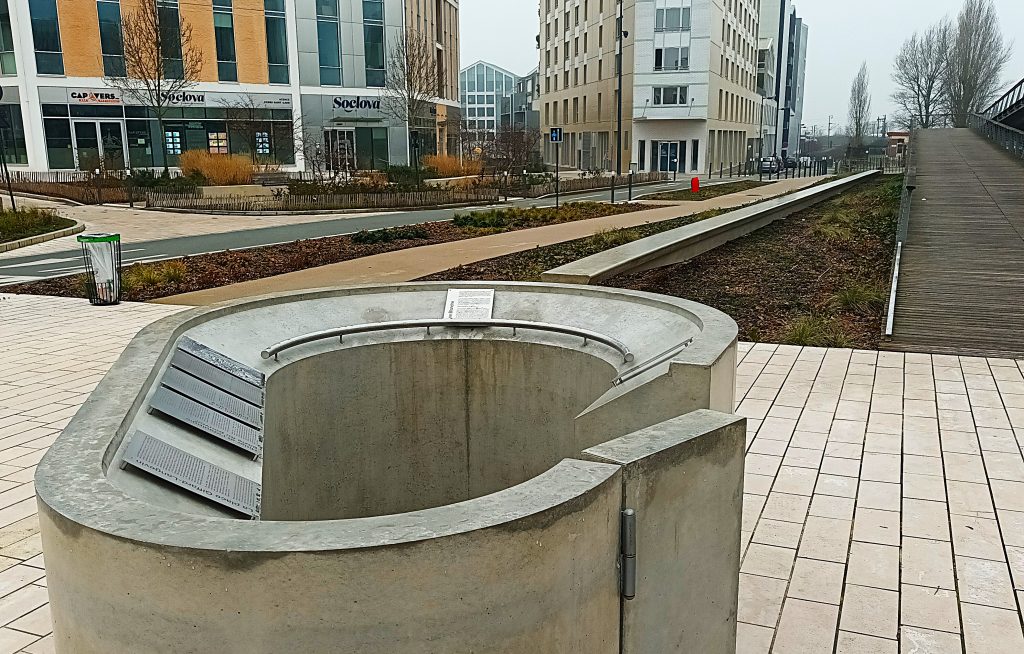
872 people crammed into the wagons were rounded up from the 5 départements that made up the large administrative region of western France at the time, with Angers as its capital. At the La Lande camp, near Tours, as well as in Paris, around fifty of these rounded-up people were taken off the train that had gone straight to Auschwitz. Only 30 survived.
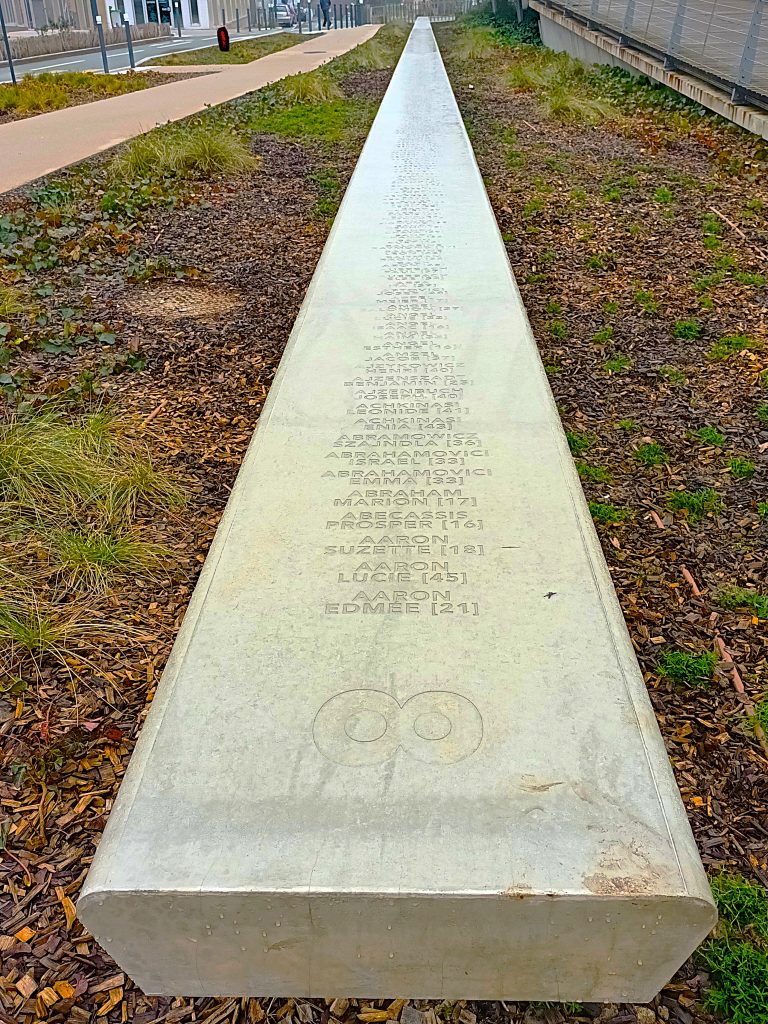
Although Leïb Josefowicz, aged 37, was part of the convoy to Auschwitz, his wife Anna (aged 38) and their children Maurice (aged 8) and Henriette (aged 1 and a half) were among the fifty or so people who got off the train, thanks to their French nationality. The head of the government, Pierre Laval, felt that the presence of the Jewish children was a burden during the Occupation, and insisted that they should also be deported. On 9 October 1942, a second roundup was carried out in Angers, including Anna, Maurice and Henriette Josefowicz, who were deported to Auschwitz. Other Jews from the region were rounded up and deported until 1944. 27 Righteous Among the Nations were recognised by Yad Vashem for having saved Jews in Anjou during the Holocaust.
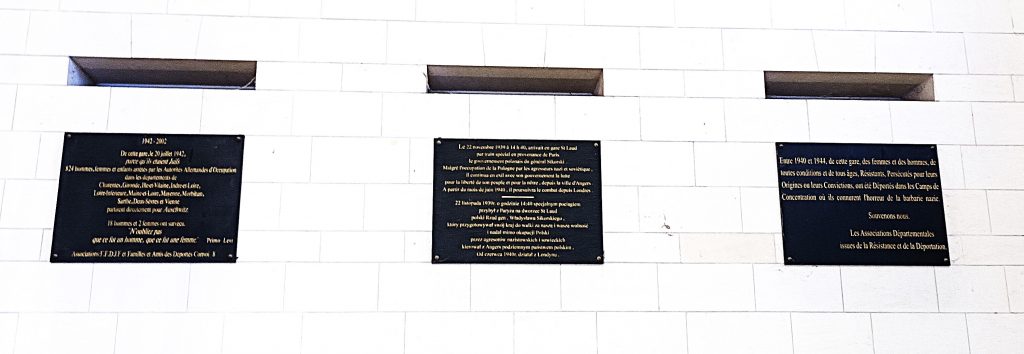
The Josefowicz family lived on rue Millet in Angers town centre. The same street where the Sacré-Cœur La Salle secondary school is now located. Its history teachers suggested that their pupils retrace the history of the Josefowicz family. 36 pupils from the final year took part, presenting their findings on 25 May 2023 at an exhibition on the Shoah in Angers.
The Jewish community in Angers was reconstituted after the war and strengthened in the early 1960s with the arrival of Jews from North Africa. It is relatively small but very active, and prayers are held at the synagogue on Friday evenings for Shabbat and on major holidays. When young people from the Consistory’s Hazac join them or with the participation of members of the Lubavitch movement, prayers can be held there on Saturdays. The community organises numerous cultural events in the hall next to the synagogue.
This page was written thanks to the great help of the Jewish community of Angers we met, in particular Mr Edgar Mattout.